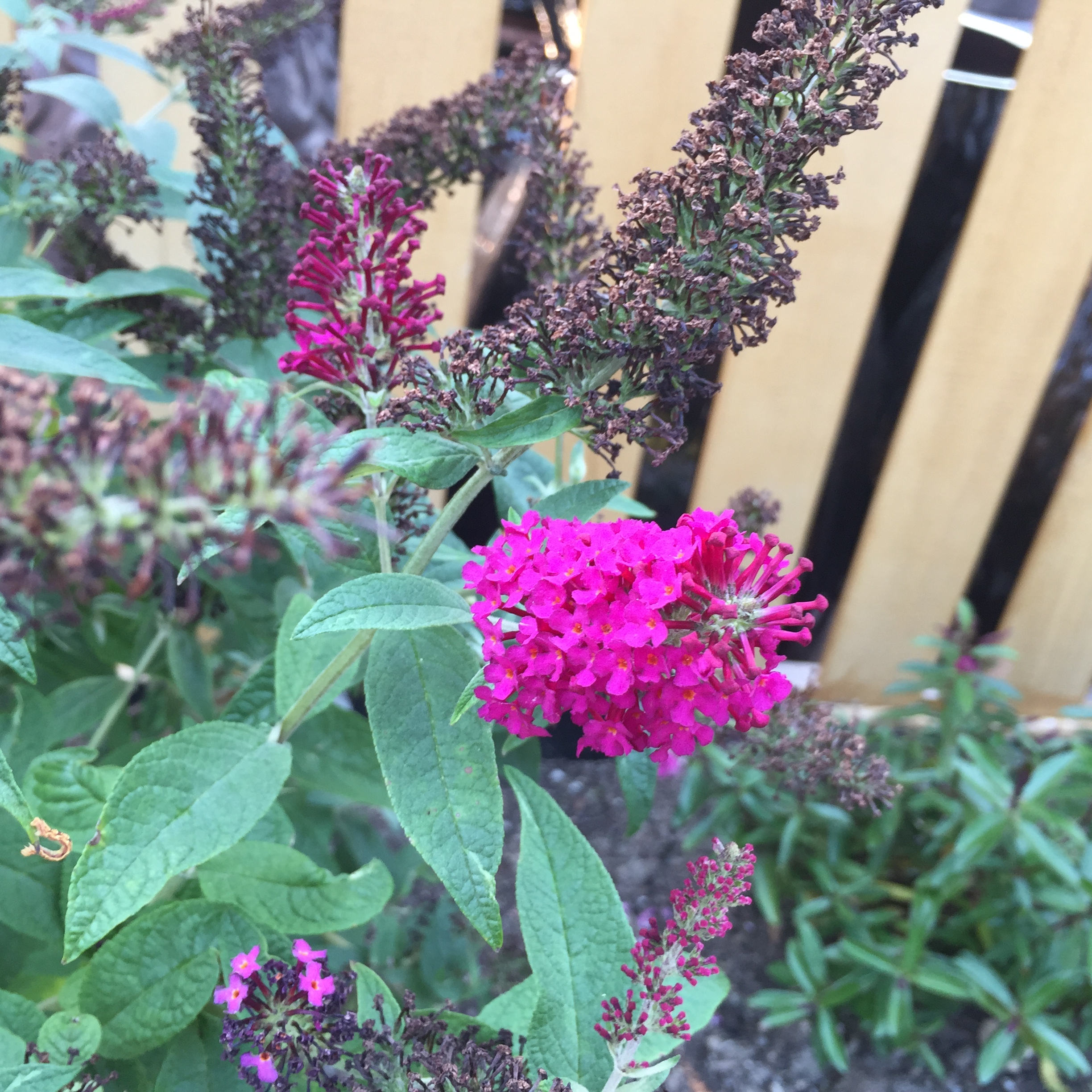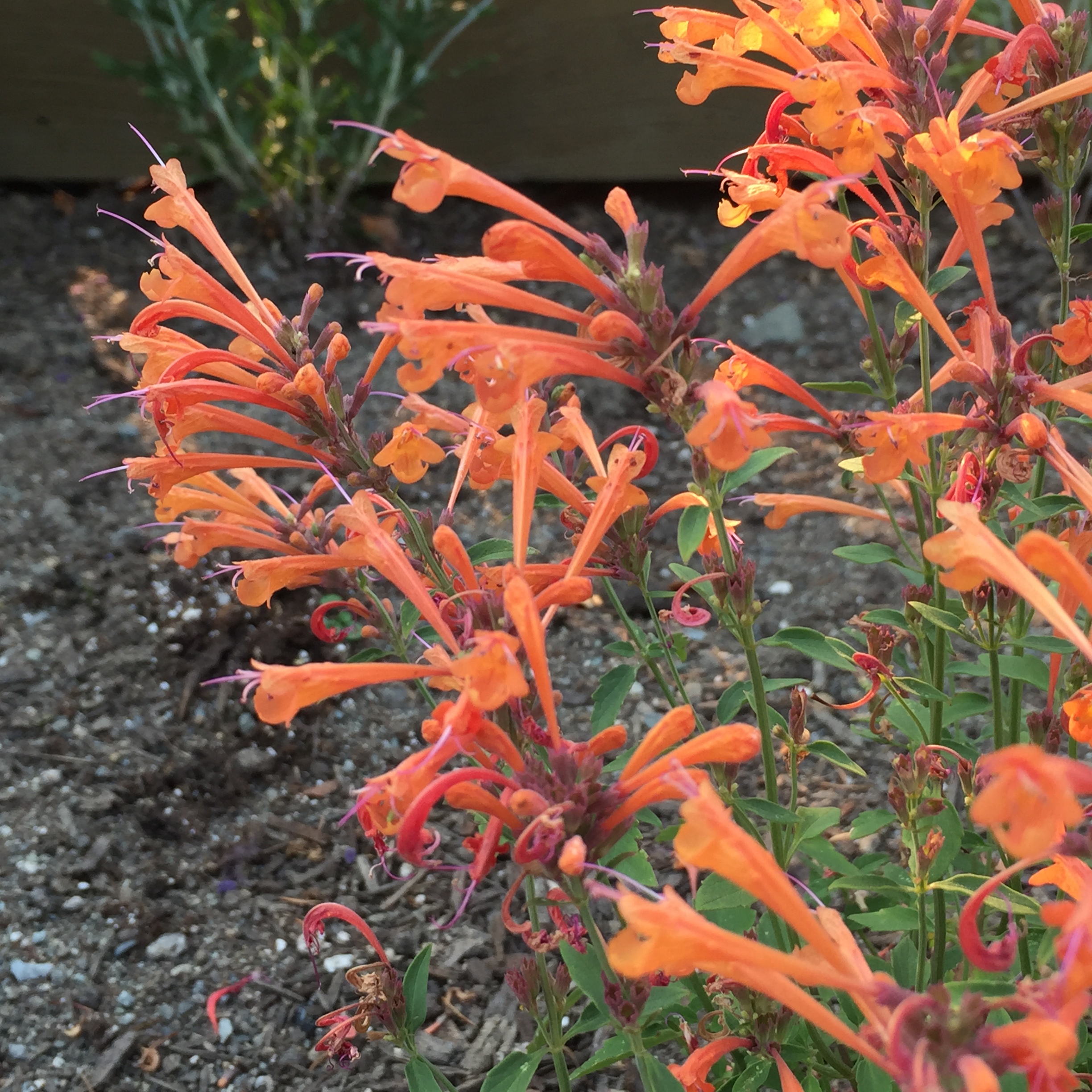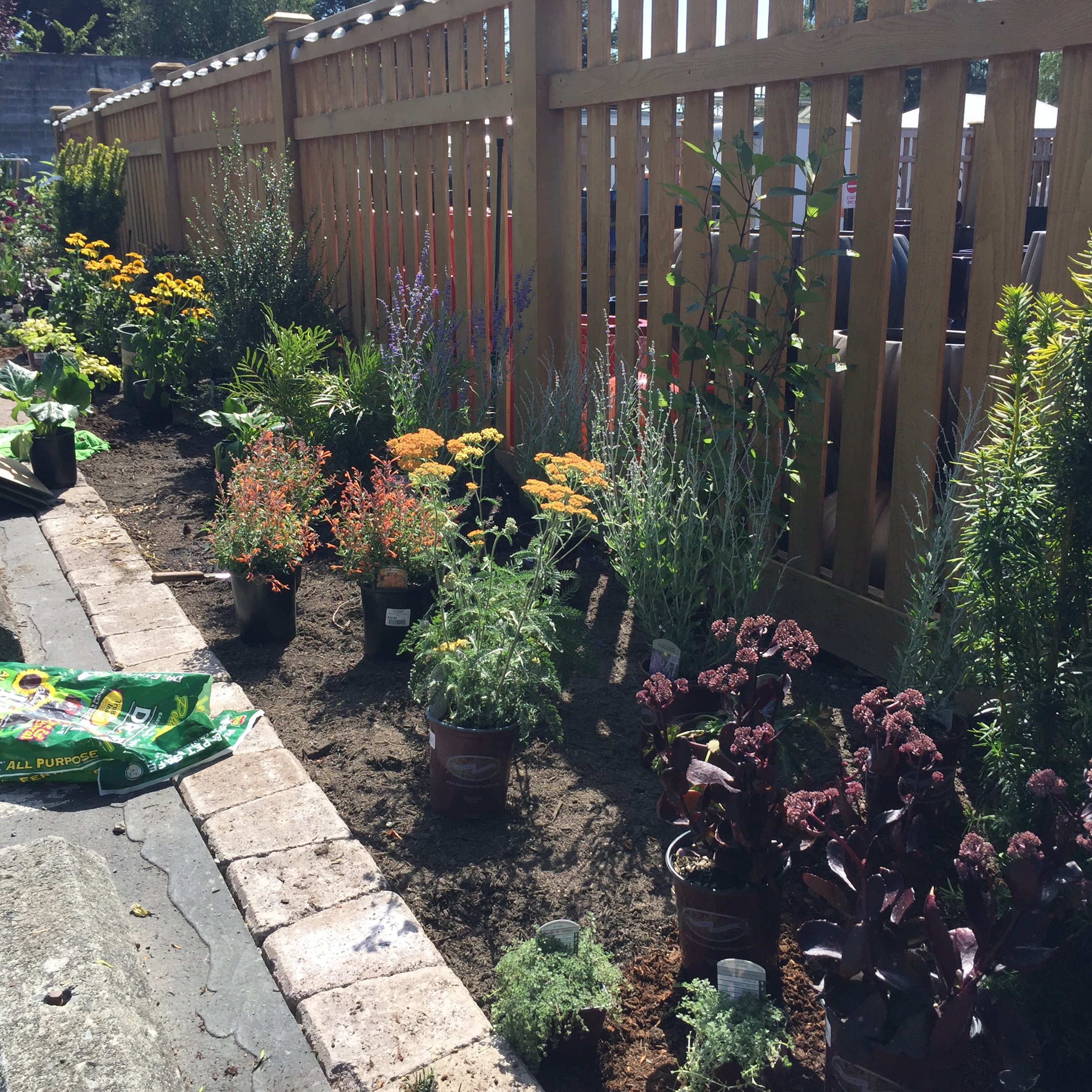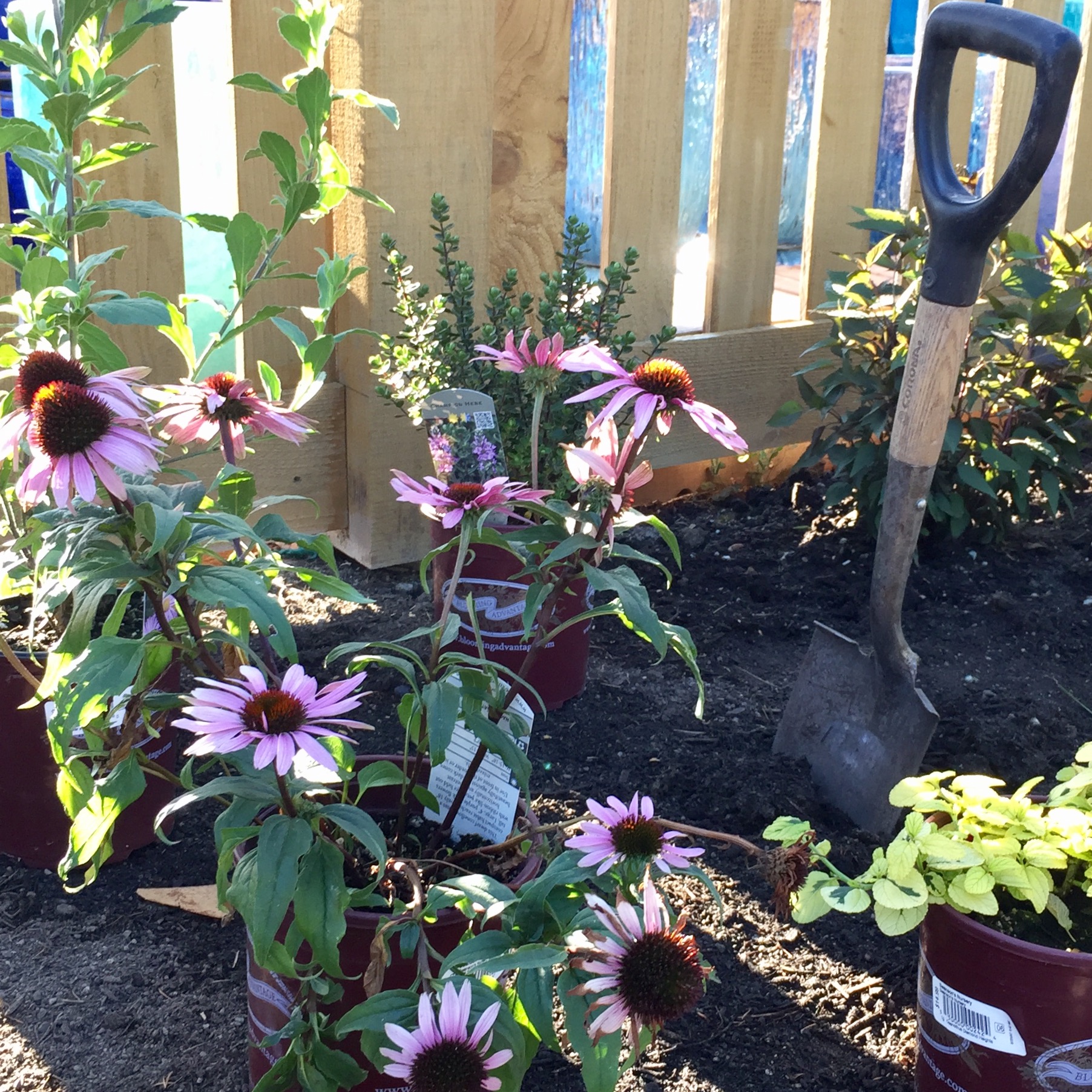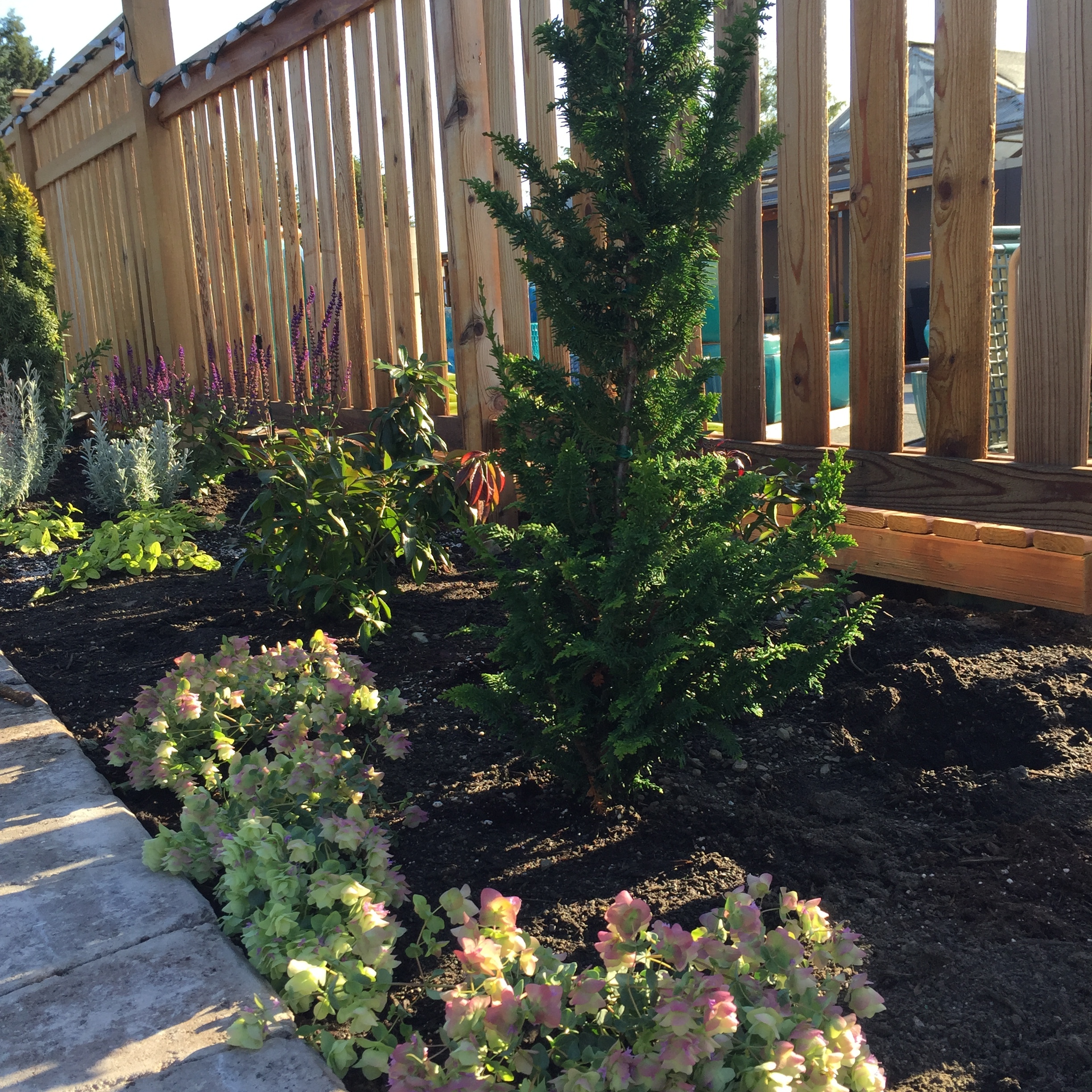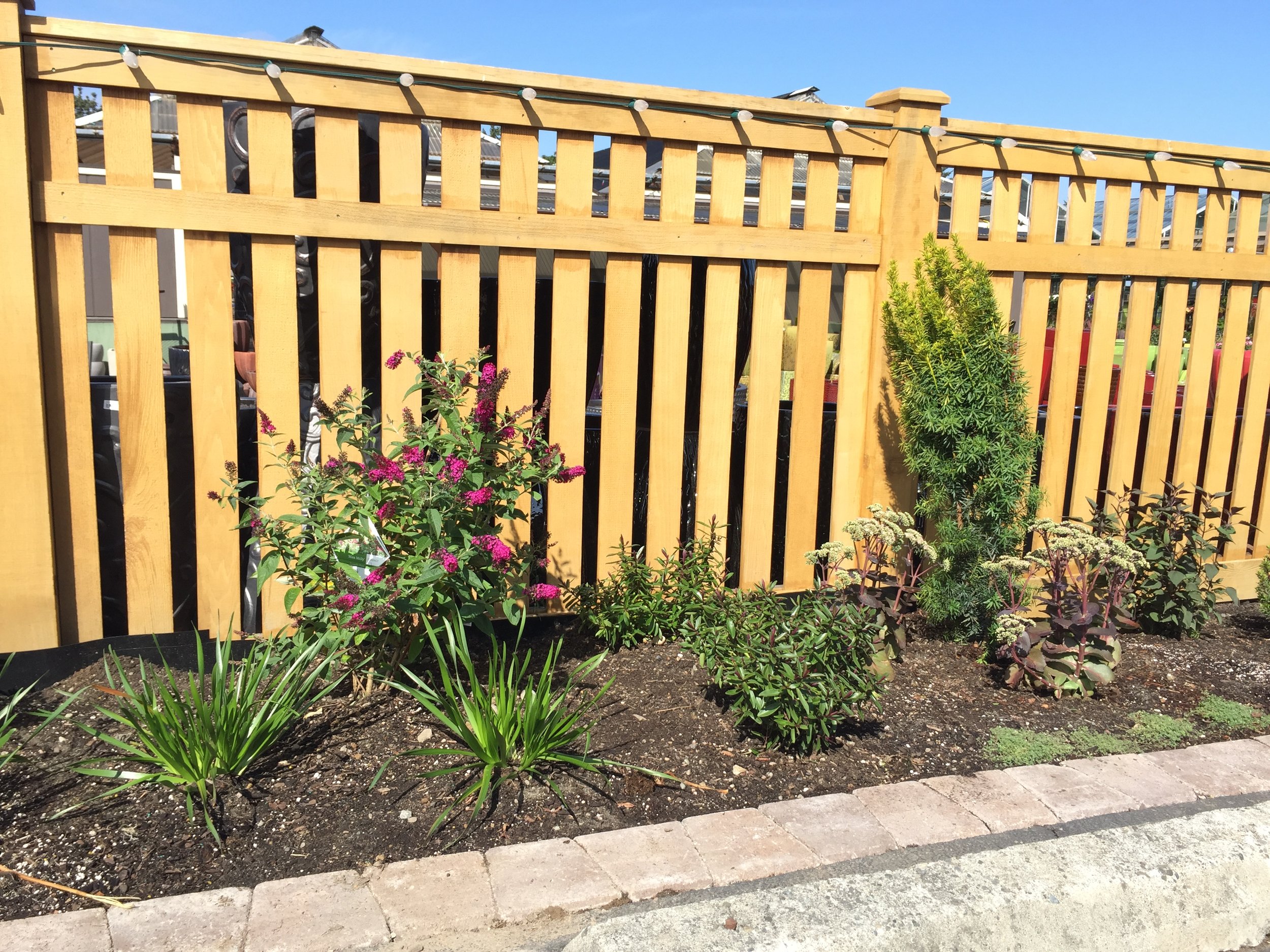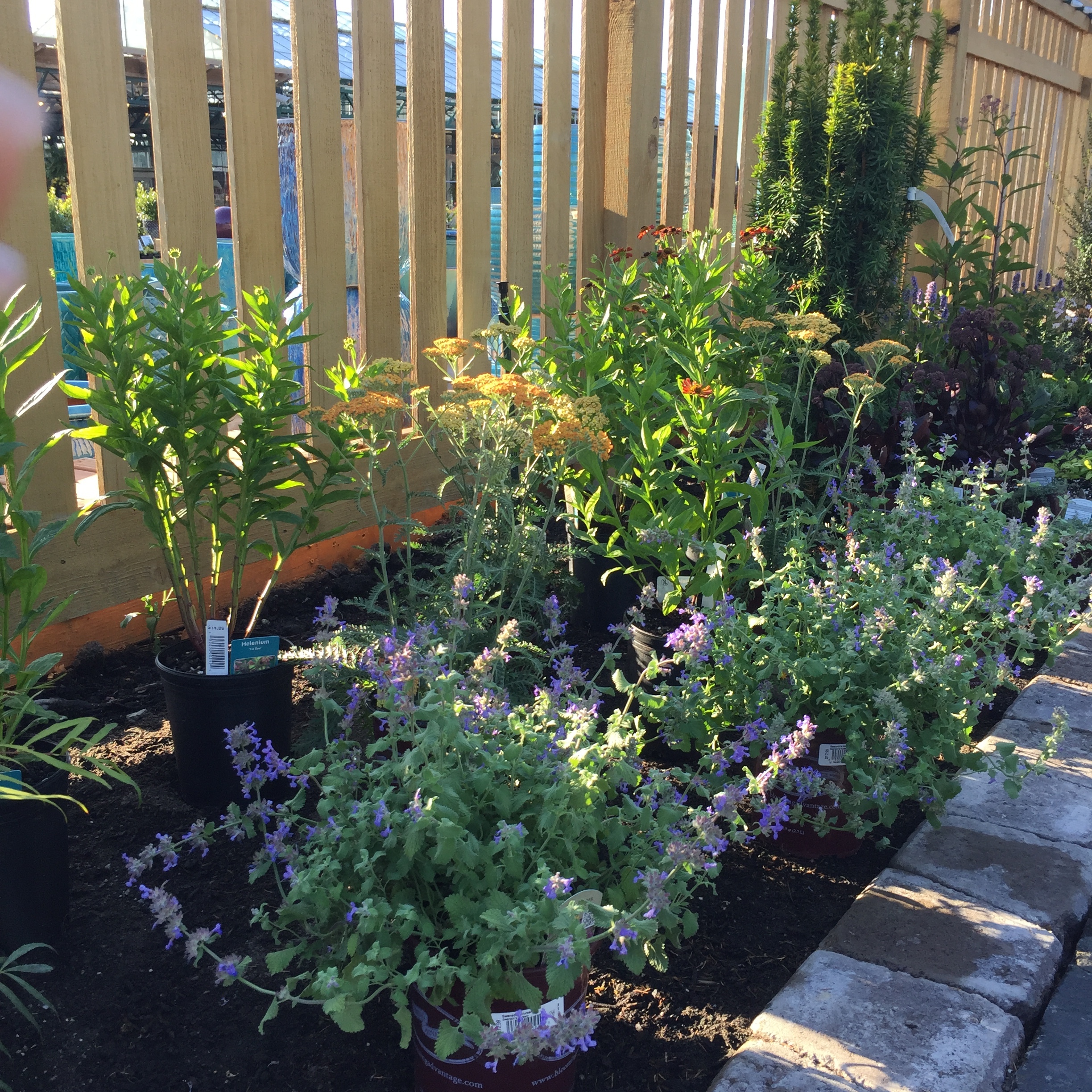On a late-summer day of 2015, a windstorm roared through Swansons. Near the southeastern portion of the property, a fence draped with mature Vitis (Grapes) and Rosa (Roses) came crashing down and was then removed. Over time, Swansons thought about plans for the almost 100ft long empty space and by 2017 it was finally time to begin.
It was decided that a pollinator garden was to be built, a mixed garden of herbaceous, woody, and evergreen plants. We acknowledged that plant selection should not be based solely on aesthetic but mostly -if not fully- the environmental and ecosystem services they provide. Creating sustainable landscapes is a crucial part of helping to protect our natural resources and plant and animal biodiversity. The word “pollinators” has been abuzz lately, and we wondered, how much do we really know about them?
"When I see hues of blue-green metallic around my ‘Moonbeam’ Coreopsis, I know it's them: the sweat bees are unmistakable. Whenever I see oddball bugs, I try to identify them, to find out what they are doing in the garden."
- Bram Olson (horticulturist, Swansons' tree & shrub department)
For some of us rookies, it should be noted that pollinators are not limited to bees, they include moths, wasps, butterflies, many insects, and even bats to name a few. Pollinators move pollen from one part of the flower - the stamen - to another - the stigma - contributing to the pollination process. Within the plant ovary, fertilization occurs and plant lifecycle continues. As the plant grows it also flowers and produces fruit. The fruit contains the seeds that hold the genetic information of their species. It is important to remember that protecting plant biodiversity is necessary to retain useful medicinal plants or food crops.
"It was great to change my perspective on bats from the spooky, eerie feeling to understanding their role in the ecosystem."
- Lo Holohan (vegetable buyer at Swansons)
As Seattle becomes more developed –it is very important to integrate green space and plant cover into the landscape. The benefits of urban trees and plants are plenty: they expand into providing nectar sources, shade, habitat, and wind barriers to these pollinators and other biota. If we could provide even a small area of land to them here at Swansons, we could make a positive impact in our community and hopefully inspire others to do the same.
For proper plant selection, we considered that these plants should have different bloom times. Varying bloom times provide nectar availability throughout the seasons. They should be a mix of species and, for our site, also have a tolerance for a microclimate that is exposed to full day sun, car traffic and radiating heat from the pavement. Before we chose plants, we also needed to know – what pollinators live in our area?
After some research, we found that Washington state is home to Papilio rutulus (Western Tiger Swallowtail), Lycaena helloides (Purplish Copper), Nymphalis antiopa (Mourning Cloak) and many other moths and butterflies. Two hummingbird species in Washington state include Calypte anna (Anna’s) and Selasphorus rufus (Rufous).
These species collectively seemed to prefer members of the plant family Asteraceae (otherwise known as the composite flowers). Some Asterceae genera included in the garden are Aster, Achillea (Yarrow), Echinacea (Coneflower), Eupatorium (Joe-Pye Weed) and Helenium (Sneezeweed). Asteraceae is a huge plant family with around 1500 genera and about 30,000 species.
Other botanical families planted in the garden include Ericaceae (Heather family), Lamiaceae (Mint family), Crassulaceae (Stonecrop family) and more. To attract bees, we choose Ceanothus (California Wild Lilac), Agastache (Hyssop), Hebe, and Thymus (Thyme) species.
A Buddejia (Butterfly Bush) cultivar (not the invasive!), Clethera (Summersweet), Kniphofia (Red Hot Poker) and Mahonia (Oregon Grape) were chosen for the hummingbirds.
Suddenly there we were, elbows deep in the soil. After two days, we were on our way to completing the foundational plantings of the garden. Although this was a fantastic start, we still have more work to do. We will be retrieving a couple of nurse logs or snags, integrating annual flowers, and selecting a bird bath and bird houses to complete the garden.
Come visit and take a look at our progress. As always, Swansons aims to support our community of gardeners. Let us know about projects you are working on in your own gardens or new ones you want to see in the neighborhood. As Bram reminds us, “If you build it, they will come.”
Resources
Attracting Pollinators & Wildlife to Your Garden
Swansons’ Blog: Bling on the Wing: 12 Months of Flower for Hummingbirds & 11 Plants to Attract Bees, Butterflies & Hummingbirds to Your Garden
Arboretum Foundation: Getting to know our Northwest Native Bees.
Journal of Arboriculture: Effects of urban tree management and species selection on atmospheric carbon dioxide.
*Link R., Landscaping for Wildlife, Washington Department of Fish and Wildlife, University of Washington Press, Seattle, Washington, 1999.
Pollinator Partnership: A Technical Manual for Maintaining Roadsides for Pollinators: Establishment, Restoration, Management and Maintenance.
Washington Butterfly Association: Common Butterflies of the Puget Sound Region and Their Food Plants.




